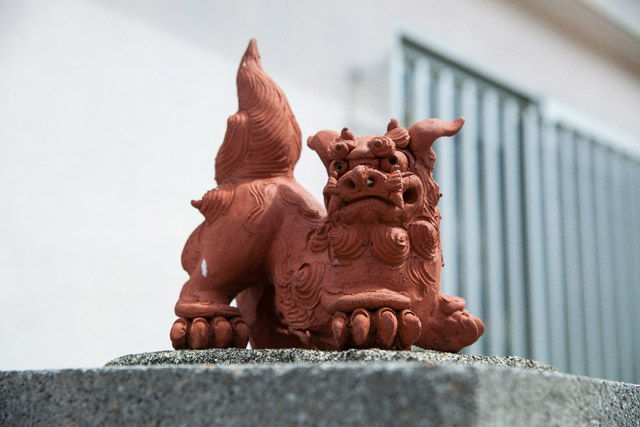
Second to its beaches, Okinawa is loved for its pottery, and Naha's Tsuboya Dori also known as ‘Pottery Road’ has been the heart of Okinawa’s pottery culture ever since the Ryukyu Kingdom ruled.
-
Still today the area is known as the birthplace and home of ‘yachimun’ an Okinawan word used to describe pottery made by local artisans and craftsmen and women that uses soil indigenous to the area. If you look around the city of Naha you’ll notice the prefecture’s love of their local pottery.
![PotteryRoadNaha]()
PotteryRoadNaha
Traditional houses still boast stunning red earthenware roof tiles often embellished with the inescapably iconic lion-dog figures known as shisa. Situated on rooftops overlooking and guarding Okinawa’s people, these shisa were crafted in the Tsuboya Pottery District.
![shisa]()
shisa
Filled with as much history as there is pottery, Tsuboya Dori truly flourished during the Ryukyuan era, when the empire increased its trading with China and other parts of the neighboring Southeast Asia. Following the devastation the island suffered during the attacks of World War II, Tsuboya Dori proved resilient, bouncing back and creating an industry focused on producing the necessary everyday items the island so desperately needed.
![PotteryRoadNahaTsuboyaPotteryMuseum]()
PotteryRoadNahaTsuboyaPotteryMuseum
If you’re interested in the local produce of Tsuboya Dori, you can’t miss the opportunity to visit the Tsuboya pottery museum. Wandering through the museum halls you’ll learn everything there is to know about this ancient craft. The museum is ready to inform you about everything pottery, from differentiating between the different forms, identifying the benefits and techniques of both glazed and unglazed wares, and just how World War II affected the local craft. The museum is open from 10:00 a.m. to 6:00 p.m. Tuesday through Sunday. Admission costs 315 yen for adults, students and children are free.
- Naha Municipal Tsuboya Pottery Museum
-
4.0
155 Reviews -
-
- Okinawa Pref. Nahashi Tsuboya 1-9-32
-
-
-
- 0988623761
-
-
-
- 10:00-18:00 (Admission until…
-
View All![UtsuwaStore]()
UtsuwaStore
Once you’re done exploring all the 20 plus ceramic art workshops, stores and galleries dotted along the limestone streets, it’s time to grab something to eat and drink from the local cafes nestled between the workshops and stores. It’s just another way to appreciate the art of Tsuboya Dori, because of course the cozy local cafes serve their treats on charming handcrafted yachimun platters. If you’re feeling inspired there are opportunities for you to actually create your own pottery. At Tsuboya Vill Workshop you can craft your own bowl, plate, or hanging shisa, the session takes about an hour and costs for around 3,000 yen. Pop by the workshop on your visit to check class times.
![BukuBukuCafeandGallery]()
BukuBukuCafeandGallery
Situated only 400 meters south of central Naha’s Kokusai Dori and a ten minute walk from Asato Station the district is an easy and accessible walk for visitors exploring the heart the city. If your legs are too weary from all the beachside activities you can catch the local Okinawa Monorail.



 Go here
Go here









